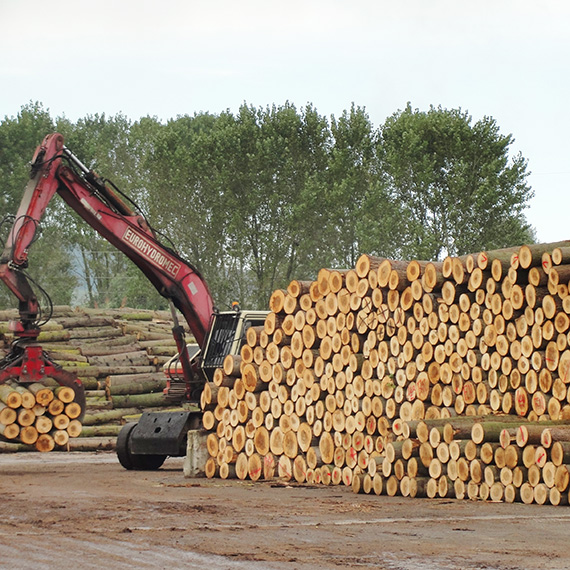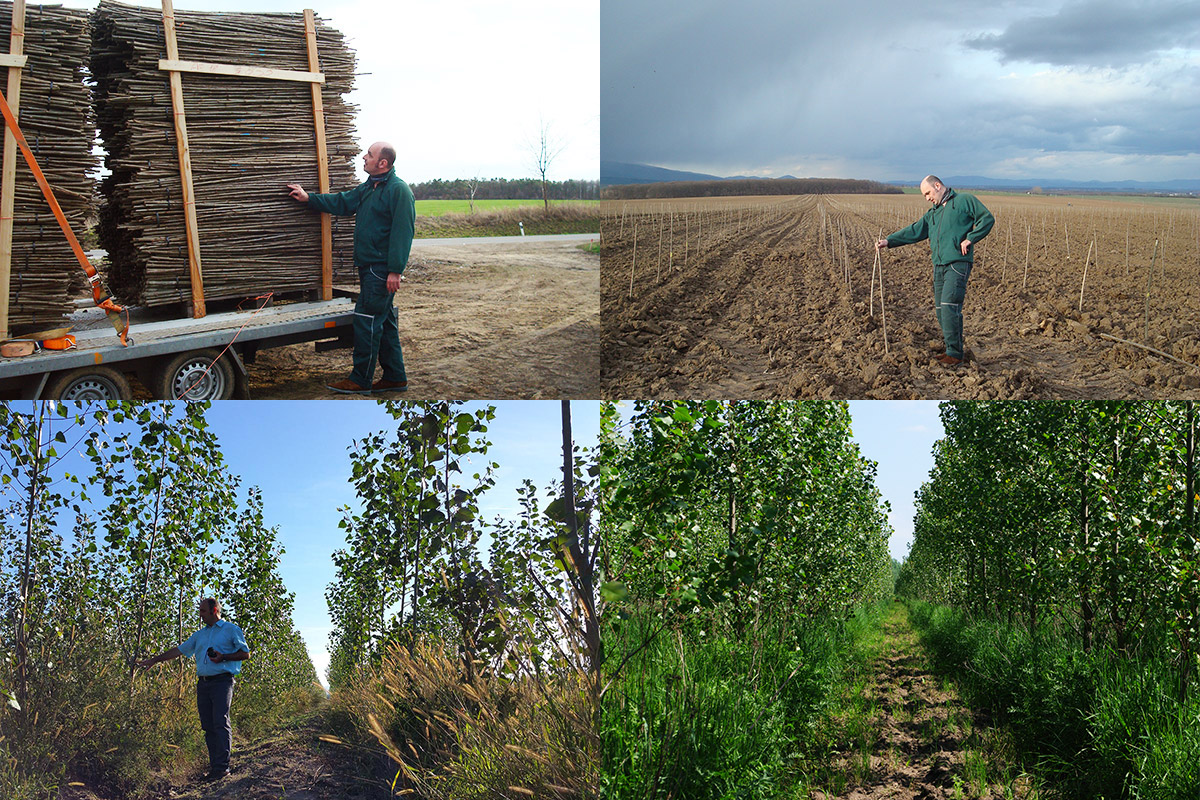
Short rotation coppicing (SRC) is agricultural tree cropping enabling short-term wood or dendromass (woody biomass) production, using fast growing tree species.
Most important SRC species in the temperate zones (mediterranean, warm and cold temperate zones) are by far the Populus species, which are mostly hybrid poplars, as well as aspens and white poplars. Other important species for SRC are willows (Salix spp.) or black locust (Robinia pseudoacacia). The SRC cycle follows a basic principle: During the first rotation, the plantation is established with cuttings or rods (hybrid poplars, willows) or with seedlings (aspens, black locust). After some years of growing, but not longer than 20 years (depending on state-specific legislation within the EU), the SRC can be harvested. The second rotation is marked by the re-sprouting from the stumps and an accelerated growth because the root system is already established. It is often proposed that there is a maximum rotation number, e.g. 3 or 5, until the stumps gradually lose their vigor. European SRC will help the agricultural sector to diversify its crops and to provide positive social effects on the employment of the rural citizenship.
SRC are “de novo” established wood resources outside of the forests and thus they are an appropriate response to the problem of the predicted wood supply gap in Europe and to the increasing demand for biomass for establishing a European bio-based society. Sustainably operated, SRC provide the opportunity for value chains having the superior energy-input to energy-output ratio because the fastgrowing tree species do not need machine effort for several years (tilling, ploughing) and grow mainly without fertilization and spraying of fungicides or insecticides. The high energy efficiency allows operation scenarios where the plantations can fix (net) carbon and can hence support the CO2 objectives of the EU.

SRC are agricultural biomass crops and not forests. Therefore, ecological impacts have to be compared to other biomass crops like corn, starch potato or oilseed rape. Based on the slowdown of the agricultural activities, SRC can improve the habitat quality of agricultural landscapes for several animal groups, e.g. for mammals, soil biocoenoses and breeding birds adapted to forest conditions, because SRC are not annually managed. They are significantly less fertilized or sprayed, the field is not ploughed every year and SRC accept herbal understorey, edge structures and gaps providing a higher bio-diversity.
